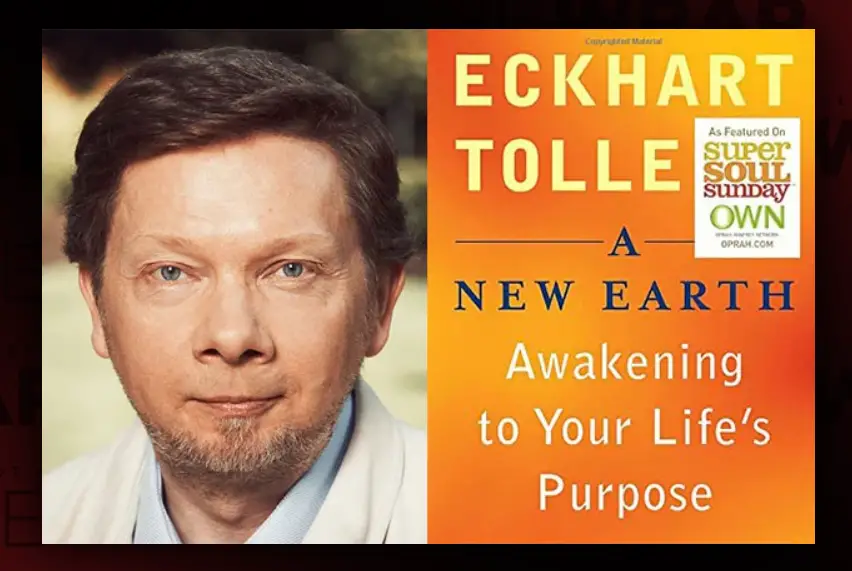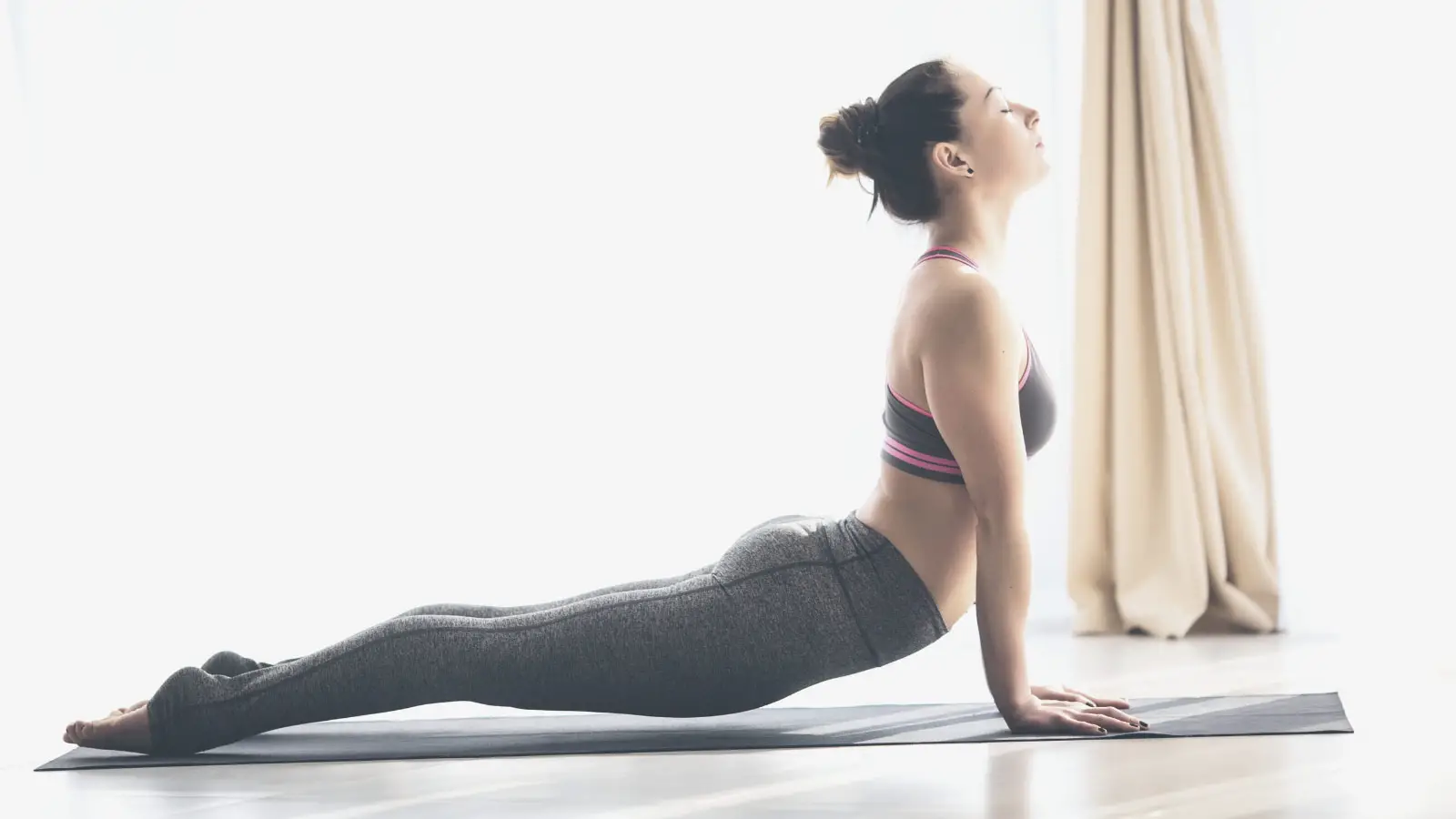Embarking on a journey to deepen your yoga practice can be a transformative experience. It allows you to explore different aspects of yoga and discover new techniques that can enhance your physical, mental and spiritual well-being. Whether you’re a beginner or an experienced yogi, the path of yoga is never-ending and always filled with new opportunities and experiences.
If you are looking to deepen your yoga practice, do so slowly and gradually: discover different types of yoga, learn powerful breathing techniques and gradually incorporate eight limbs of yoga into your daily life.
While it all sounds very easy, in practice the learning process requires big deal of dedication. But once committed, the results reveal themselves in no time.
Try different types of Yoga
When it comes to deepening your yoga practice, one of the most valuable things you can do is to try different types of yoga. Each style offers its own unique benefits and can help you to explore different aspects of the practice.
For example, if you’re looking to build strength and increase flexibility, Ashtanga or Vinyasa yoga might be a good choice. These styles are known for their dynamic flow and focus on building heat in the body. On the other hand, if you’re looking to relax and de-stress, restorative or yin yoga might be more your style. These styles are known for their slow pace and use of props to support the body in passive poses.
Another important aspect of trying different types of yoga is that it can help you to find a style that resonates with you. Each person is different, and what works for one person may not work for another. By experimenting with different styles, you can discover which ones you enjoy the most and which ones align with your goals and needs.
It’s also important to remember that trying different types of yoga doesn’t mean you need to stop practicing your favorite style. In fact, by supplementing your regular practice with new styles, you can gain a deeper understanding of the practice as a whole, how it can benefit you in different ways and make it more versatile.
When trying new styles, it’s important to be mindful of your own limitations and consult with your teacher. If you’re new to yoga, it’s best to start with a more basic class and gradually progress to more advanced styles. And if you have any injuries or health conditions, make sure to let your teacher know before class so that they can offer modifications or alternatives.
Overall, trying different types of yoga is a great way to deepen your practice and gain a more holistic understanding of the practice. So, be curious and open-minded, and try different styles to see how they can benefit you in your journey to deepen your yoga practice.
Learn different types of breathing techniques
Learning different types of breathing techniques, also known as pranayama, is a powerful way to deepen your yoga practice and gain control over your mind and body. The breath is often referred to as the “bridge” between the body and mind, and by learning how to control it, you can learn to control your thoughts and emotions.
Ujjayi breath
Ujjayi breath, also known as “ocean breath” or “victorious breath,” is a pranayama technique that is commonly used in yoga practice. It is characterized by a soft, ocean-like sound that is created by slightly constricting the back of the throat. The sound is created by narrowing the opening of the glottis (the space between the vocal cords) when you inhale and exhale.
To practice Ujjayi breath, you can begin by taking a normal breath in and out through your nose. Then, as you inhale, gently constrict the back of the throat to create a soft, ocean-like sound. As you exhale, release the constriction and breathe out through the nose, creating the same sound.
Ujjayi breath has several benefits: it can help to regulate the breath, increase focus and concentration, and is said to have a calming effect on the mind and body. It is also believed to stimulate the vagus nerve, which can help to reduce stress and promote relaxation.
Ujjayi breath is often used during asanas (yoga postures) practice and is considered a key component of vinyasa yoga. It is also used in pranayama and meditation practice. It’s important to note that the breath should be smooth and even, and the sound should be consistent throughout the entire breath. It’s important to practice ujjayi breath with guidance of a teacher as it may cause strain if not practiced correctly.
Nadi Shodhana
Nadi Shodhana, also known as alternate nostril breathing or “channel purification” is a pranayama technique that is commonly used in yoga and meditation practice to calm the mind and balance the energy flow in the body. The word “nadi” refers to the energy channels in the body, and “shodhana” means purification.
To practice Nadi Shodhana, you can start by sitting in a comfortable position and using your right hand to close off your right nostril with your thumb. Inhale deeply through your left nostril. Then, use your ring finger to close off your left nostril and release your thumb to exhale through your right nostril. Next, inhale through your right nostril and then switch, exhaling through your left nostril. This completes one round.
The practice of Nadi Shodhana is said to balance the flow of energy in the body by clearing out blocked energy channels and promoting a sense of calm and balance. This pranayama is also believed to balance the activity of the right and left hemispheres of the brain, promoting a balanced state of mind. It can also help to reduce anxiety and stress, and improve focus and concentration.
It’s important to note that, like any pranayama technique, it’s best to learn Nadi Shodhana from a qualified teacher, who can guide you through the process and ensure that you’re practicing it correctly. It’s also important to start with shorter rounds and gradually increase the duration of your practice as you become more comfortable with the technique.
Complete Belly Breath
Complete Belly Breath, also known as Diaphragmatic Breathing or Abdominal Breathing is a simple and effective breathing technique that involves focusing on the movement of the breath in the belly. It’s a natural way of breathing where the diaphragm, a muscle located at the base of the lungs, is used to expand the lungs and breathe.
To practice Complete Belly Breath, you can start by sitting or lying down in a comfortable position. Place one hand on your chest and the other on your belly. As you inhale, focus on allowing your belly to rise and expand as the diaphragm pushes down and the lungs fill with air. As you exhale, focus on allowing your belly to fall as the diaphragm pushes up and the lungs empty.
Complete Belly Breath is an effective technique for improving overall breathing mechanics, increasing oxygenation and can be used as a relaxation tool. This technique can help to improve breathing by teaching the body to breathe more efficiently, reducing stress and anxiety, and promoting a sense of calm and well-being.
It’s important to note that Complete Belly Breath should be practiced slowly and with attention to the breath. It’s also important to practice for short periods at first and gradually increase the duration of your practice as you become more comfortable with the technique.
Sudarshan kriya
Sudarshan kriya is a powerful breathing technique that is taught in centers of the Art of Living all around the world. It is a combination of three different breathing techniques, which are meant to release stress, deep traumas, and long impressions. According to the Cambridge university, this technique is said to be effective in improving the overall quality of life.
The technique involves the use of specific sounds and rhythms that are synchronized with the breath. The practitioner inhales and exhales through the nose, with a specific ratio of inhalation to exhalation and retention, while creating specific sounds and rhythms. The technique is usually performed in a seated position and requires proper guidance from a certified Art of Living teacher.
Sudarshankriya is said to release stress and tension by creating a sense of calm and relaxation in the body and mind. It is also believed to help purify the energy channels in the body, known as Nadis, and balance the flow of energy. It is said to help to balance the activity of the right and left hemispheres of the brain, promoting a balanced state of mind.
It is important to note that Sudarshan kriya should be learned from a qualified teacher, who can guide you through the process and ensure that you are practicing it correctly. It is also important to practice for short periods at first and gradually increase the duration of your practice as you become more comfortable with the technique.
The best way to learn these breathing techniques is by finding a qualified teacher who can guide you through the process, but you can also find a lot of information online and even videos to help you to get started. Each technique will have different benefits, so it’s important to try them all and see which one resonates with you the most. Incorporating them into your yoga and meditation practice can help to deepen your practice and improve the quality of your life.
Incorporate Eight limbs of yoga in your life. Slowly.
Practicing all eight limbs of yoga allows the yogi to progress on the path of self-realization and spiritual development. The first four limbs, Yama, Niyama, Asana, and Pranayama, are considered to be external purification, and the last four limbs, Pratyahara, Dharana, Dhyana and Samadhi, are considered to be internal purification. Together, they help the yogi to purify the body and mind, and to develop the ability to focus the mind and attain a state of higher consciousness.
There are many ways to incorporate the eight limbs of yoga into your daily life. Here are a few suggestions:
- Yama: Reflect on the ethical principles of non-violence, truthfulness, and non-stealing and try to make them a part of your daily life.
- Niyama: Incorporate personal practices such as self-study, contentment, and gratitude into your daily routine.
- Asana: Make time for regular yoga practice, focusing on the physical postures.
- Pranayama: Incorporate breath control techniques, such as deep breathing and pranayama, into your daily routine.
- Pratyahara: Try to limit distractions and distractions and find time to disconnect from external stimuli.
- Dharana: Set aside time for focused concentration on one object, such as a candle flame or a mantra.
- Dhyana: Make time for regular meditation practice, focusing on the present moment and letting go of thoughts and distractions.
- Samadhi: Strive to achieve a state of enlightenment by integrating the other seven limbs into your daily life and continuing to work on your spiritual development.
Remember, these are not something to be achieved overnight, they are a journey and one should take it one step at a time. It is important to understand that incorporating these limbs in daily life is a gradual process, and be patient with yourself. Additionally, seeking guidance from a qualified teacher can help you to better understand and integrate these practices into your daily life.
Read a few good books
Books are an incredible tool when it comes to expanding our minds and deepening our knowledge. We can learn something in a few hours that took years to understand and discover. With books, we can go straight to the source – learning from the masters and greatest teachers themselves, even if they passed on years ago.
Reading spiritual books in yoga can be important because they can provide a deeper understanding and context for the practices and philosophies of yoga. They can also offer guidance on how to live a more mindful and meaningful life, which can be beneficial for both the physical and mental aspects of one’s yoga practice. Additionally, reading spiritual texts can help one to connect with a sense of inner wisdom and develop a sense of inner peace and fulfillment.
1. A New Earth: Awakening your life’s Purpose by Eckhart Tolle.
There is a reason why Oprah Winfrey calls the book ‘a wake-up call for the entire planet, one reader at a time.’ A New Earth is by far, one of the most eye-opening and soul-stirring books when it comes to mindfulness, spirituality, and consciousness. This book helps the reader understand the ego and how one can tap into his or her highest self. We are once again reminded that there is no such thing as the past or the future: only the Now. Our unlimited potential, true fulfillment, and joy lie in the present moment.
There is a beautiful paragraph where the author writes:
“When you are present, when your attention is fully in the Now, that Presence will flow into and transform what you do. There will be quality and power in it. You are present when what you are doing is not primarily a means to an end (money, prestige, winning) but fulfilling in itself, when there is joy and aliveness in what you do.“

Have you ever done something just to get to the end result? Whether it’s praise, money, or recognition, when we focus only on the end goal while doing something – the quality of our ‘doing’ diminishes. If the only reason you do your job is for the paycheck that you get, most mornings, you will wake up feeling exhausted and unhappy. Sure, the money might be worth it in the short term; after all, who doesn’t like a fancy car and a big house? However, we’re not able to tap into – and experience – the most important things that we came here to experience — presence, unconditional love, meaningful work.
If your reason for doing Yoga is just so you can have sculpted arms and show-off your fancy handstand, you will have no fun and enjoyment in your practice. Yoga is a great teacher of Presence and patience; therefore, if you ignore this aspect, you might miss the whole point of Yoga!
Eckhart Tolle says that ‘Nonresistance, non judgment, and nonattachment are the three aspects of true freedom and enlightened living.’
Can you feel the difference that your life, and your practice, would have if you kept these three words in mind?
Nonresistance to what shows up, whether it’d be unexpected obstacles at work or uncomfortable emotions during your practice, would help remain calm rather than stress.
Having no judgment towards oneself and how good, bad, flawless, or clumsy the yoga practice is, would bring more freedom and enjoyment. Most importantly, how would all that you do shift if you weren’t concerned with the end result?
If you’re ready for the next chapter in self-discovery and breakthroughs, you sure don’t want to miss this insightful read.
2. The Four Agreements by Don Miguel Ruiz
Miguel Ruiz is a spiritual teacher and author who shares incredible Toltec wisdom. If you could read only one book that would transform your life in all areas – this would be it. The four golden rules of the Toltecs that the author shares can bring more fulfillment, love, and abundance into your lives – if you apply it!
1. Be impeccable with your word
2. Don’t take anything personally
3. Don’t make assumptions
4. Always do your best
At first glance, these rules might seem fairly straightforward. However, when you go about your day-to-day life, you understand that it is harder than it looks!

Being impeccable with your word – with yourself and others – is something many of us don’t do. How many times have you promised something to someone, and failed to keep that promise? How many times have you said that you will do something, but broke your word to yourself?
‘When I go home, I will do yoga because I know how good I will feel afterward.’ Yet, 3 hours and five cookies later, you’re sitting on the couch thinking ‘Well…. Ok. I will do Yoga tomorrow.’
If we can’t keep our word to ourselves, how can we expect to keep our word with others? Imagine just how much your life could transform if you were impeccable with your word. You followed through, kept promises to yourself and others, and understood that your word – and the quality of your word – create your world.
‘Don’t take anything personally’ is something that many of us…. *ahem* forget to practice. Whether it’s a look that a stranger gives you or a passive comment that your boss makes, we tend to take everything personally.
Everything that everyone says – we make it about us. If our partner gets home upset, we go into a panic thinking ‘what did I do?’ If our co-worker makes a remark about our work, that remark will continue to simmer and boil in our mind for weeks.
Rather than having a detachment from what others say, we make everything about us. Can you imagine how much more peaceful and calm we would feel if we didn’t take anything personally?
Not taking anything personally ties in perfectly with the third rule, ‘Don’t make assumptions.’ Unfortunately, we make assumptions all day long. We make assumptions about others, we make assumptions about others making assumptions about us, and this seems to be a never-ending cycle.
As incredible as our mind is, oftentimes, we imprison ourselves with the thoughts that we think. When we go to our first yoga class, we assume that other people will be laughing at us and pointing fingers.
‘Look! It’s her first yoga class! She can’t do the poses!’
These assumptions we make frequently stop us from doing the very thing that we would like to do.
The same way, we make assumptions about others. We assume that our boss is snappy at us because he hates us when, in reality, he might be having problems with his wife. We make assumptions about what others think of us – when in fact, they’re probably not thinking about us at all.
If we genuinely work on implementing the third rule into our lives, we will be surprised to find out just how free and liberated our mind will begin to feel.
Above all, what we can commit to right this moment is doing our best. Whether it’s implementing these rules into our lives, keeping a regular yoga practice or simply sticking to our to-do list – we will fail, we will forget, we will mess up. This is not about being perfect. This is not about punishing ourselves when we take something personally or break a promise – this is about our commitment to never-ending growth.
Our best will look different on a good day than on a bad day. Be compassionate and kind with yourself, and keep doing the best that you can.
There are more gems than just these four rules in this book, and I highly recommend you give yourself the gift of reading it.
3. The Universe has your back by Gabby Bernstein
A little surrender, letting go and faith can go a long way! Gabby is a New York Times bestselling author who talks about spirituality, surrender, and how we can become best friends with the Universe!
It’s easy for us to fall into a pattern of force and control: tirelessly working on building our business or desperately looking for a partner. We love to be in charge and know all the details of life. We’re natural dot connectors, and we work hard to figure out how we will get from point A to point B.
Gabby has a beautiful prayer in the book:
‘I step back and let the Universe lead the way’
Let’s be honest, how often do we let life, and the Universe, guide us? How often do we choose surrender over force?
Most of us have learned from a young age that when we get out into the real world, it’s all about working and making things happen. Businesses don’t magically grow, magical relationships don’t randomly come to be, and opportunities don’t come knocking at your door.

Don’t take this the wrong way – putting in the work is a big part of achieving anything in life. No magical fairy dust will make us successful the same way that no magical fairy will clean our apartment.
However, we’ve forgotten that we are a part of a bigger Universe. A Universe that wants to guide us, and a Universe that wants to help us achieve all that we want to achieve. There is a difference between forcing something to happen and allowing it to happen.
What would happen if you stopped desperately looking for a partner? If you stopped forcing the promotion and the raise to happen? If you just said to life, and the Universe :
‘Okay! I surrender! I’ve been doing my part, I’ve been putting myself out there, I’ve been working, but nothing! Please guide me in achieving my dreams. Help me fulfill my deepest desires.’
The author has some incredible and truly magical examples in the book. In one of the chapters, Gabby explains how she and her husband were desperately looking for an apartment in New York City. They were grumpy, disappointed, and had no fun during this process.
She suddenly realized that she was forcing things to happen, having expectations about how it should happen, and not letting the Universe interfere. Lo and behold, when she surrendered the struggles of finding a place and ideas of how it had to happen, they found the most incredible house (not even an apartment!)
If you have a deep vision for yourself and what you want to do, achieve, and have in life, let the Universe interfere. Our small human minds can’t see the endless possibilities and opportunities that are lurking around the corner, because we’re so focused on how we think it should happen.
Surrender allows room for fun and joy. When you get on the mat to practice Yoga, do you want to force every move and have a million expectations about how your practice should be? Or do you want to surrender to your body, to the practice, and allow fluid movement to come through?
Yoga is a great teacher of surrender and letting go. You have to surrender your control, let go of any expectations and tune into your breath and Presence. The same way, we all could use a reminder to surrender our control to the Universe, and let it show us the magic that it possesses.
You will be thoroughly surprised at how quickly and effortlessly things will start moving. You will run into a potential investor at the airport whilst waiting for a flight, meet your future husband at a random concert that you decided to go to last-minute and find the home of your dreams by taking the wrong turn when driving.
A New Earth: Awakening your life’s Purpose, The Four Agreements, and The Universe has your back, will not only expand your understanding of life and self but will also bring a deeper quality and Presence to all that you do. Whether it’s engaging in a conversation with your loved one, or simply getting onto the mat to practice Yoga – your new sense of awareness and depth will shine through.
Closing thoughts
No matter when you decide to begin to step deeper into the journey of yoga, the process of learning and the joy of experience is what counts. Remember to be patient and enjoy the journey, as you deepen your yoga practice and become an even more enlightened yogi.








